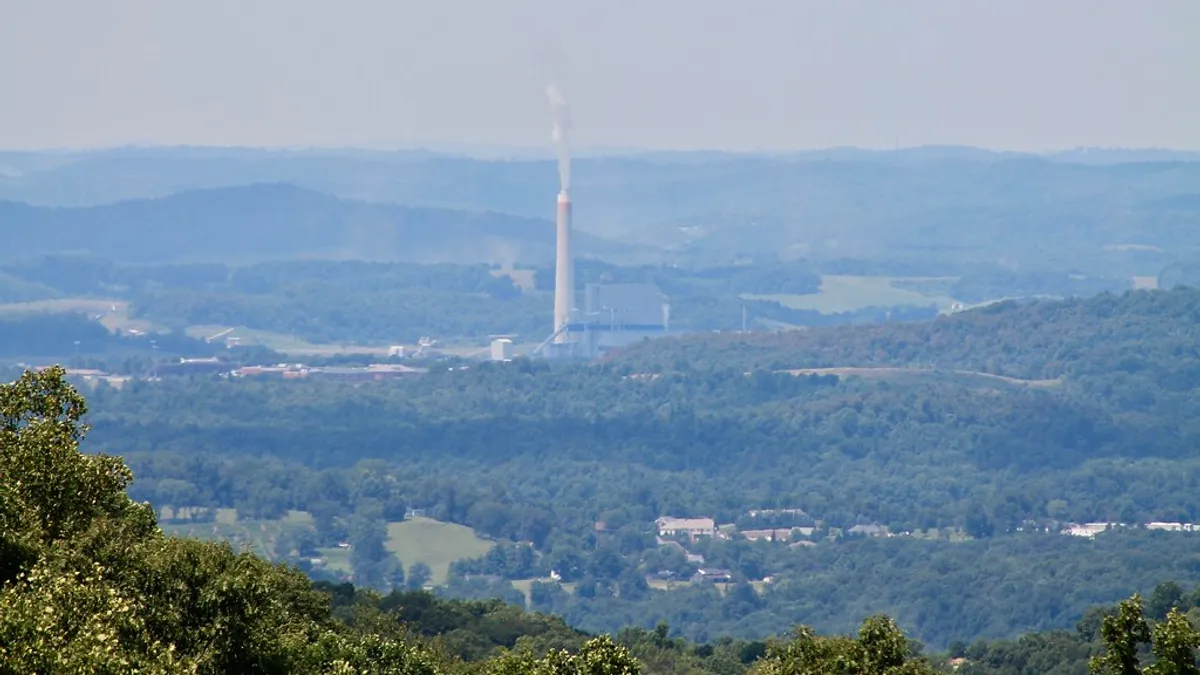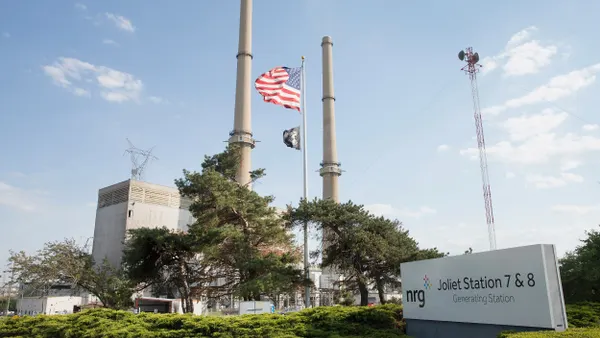Dive Brief:
-
West Virginia lawmakers last week urged federal regulators to expedite the approval of a filing that would allow a 700 MW merchant coal-fired power plant to continue operating in the state.
-
Sens. Joe Manchin, D-W.Va., and Shelley Moore Capito, R-W. Va., on Thursday wrote to the Federal Energy Regulatory Commission asking for "expeditious consideration" of Longview Power's section 203 filing under the Federal Power Act to authorize several asset managers' acquisition of the plant as part of its Chapter 11 bankruptcy reorganization plan. The company's sole asset is the coal plant and it declared bankruptcy in April of this year.
-
Although Longview cites declining load from the COVID-19 pandemic as part of its reason for entering bankruptcy, consumer advocacy group Public Citizen in its comments noted the company had been considering bankruptcy since January. The advocacy group also in its comments urged FERC to require Longview to disclose the plant's new upstream owners.
Dive Insight:
Coal-fired power is having a tough time competing with low cost renewables and natural gas in general, but merchant coal plants face particular challenges in wholesale power markets, as their revenue almost exclusively comes from market sales, Metin Celebi, a principal at the Brattle Group who focuses on electricity markets told Utility Dive.
For merchant plants, their main and sometimes only "source of revenue is the wholesale markets for energy capacity and ancillary services. It comes either from the spot market or from the bilateral contracts that tend to be tied to the wholesale market. So they are very much exposed to a decrease in the wholesale power prices," he said.
Longview has been touted as the most efficient coal plant in the country by Manchin, who serves as ranking member of the Senate Energy and Natural Resources Committee, and former Secretary of Energy Rick Perry. The plant was built through private equity companies in the early 2000s and has faced several operational challenges over the years, as well as financial — April marked its second bankruptcy in the past decade.
Its owner named a number of reasons for the company's bankruptcy, including long-term pressure from natural gas, a mild winter and the COVID-19 pandemic.
"This filing is unfortunate but necessary given the current depressed power prices, which have further dropped more recently due to the terrible COVID-19 pandemic sweeping the nation and dramatic effects of the pandemic on the economy," Longview CEO Jeffrey Keffer said in a statement when the company's bankruptcy was first announced.
Manchin and Moore Capito in their letter to FERC also noted the bankruptcy was filed during the coronavirus pandemic. "A timely review of this application is essential as Longview works to emerge from bankruptcy proceedings that commenced this spring in the midst of the COVID-19 pandemic's shock to electricity demand," the senators wrote.
The senators' letter is "very carefully worded," noted Tyson Slocum, director of Public Citizen's Energy Program told Utility Dive. "It strongly suggests that the bankruptcy was triggered by COVID. … They're trying to make the case to FERC ‘Hey, this power plant, we need to help it get back up on its feet, it got dissed pretty hard here with COVID.'"
But the company itself has admitted the plant was in trouble before the economic impacts of COVID-19 hit.
"We really started working [on the bankruptcy] in late January when we realized that we weren't going to have any kind of winter energy price boost," Keffer said in an interview with SNL Generation Markets Week. "It was just such an unseasonably warm winter, if anything, pricing for us was running less than half of what we normally see."
And Fitch Ratings has kept Longview on its Top Loans of Concern list since 2017, S&P Global reported in April.
The greatest concern raised by Public Citizen on the bankruptcy filing, though, is who owns the 40.47% share of Longview's equity, said Slocum.
Under the company's bankruptcy plan, which was approved in May by the United States Bankruptcy Court for the District of Delaware, $350 million in debt was forgiven and the company was given a $40 million loan from its new owners. But because over 40% of the ownership is made up of a collection of entities that own less than 10% each, the company says those owners lack control of the utility and therefore do not have to identify themselves as affiliates.
Slocum in his filing disagreed, arguing that it is in the public interest for the company to disclose all its owners.
"In the world of finance today, there's a lot of pressure from a lot of different actors to pressure financial entities to cut off financing for coal," he said. "When you don't disclose that you are now the proud new equity owner of a coal-fired power plant, you definitely are not going to have any activists banging on your door asking why you're investing in coal, because nobody knows that you're investing in coal."
Longview did not respond to request for comment. Comments on the filing are due Wednesday.














